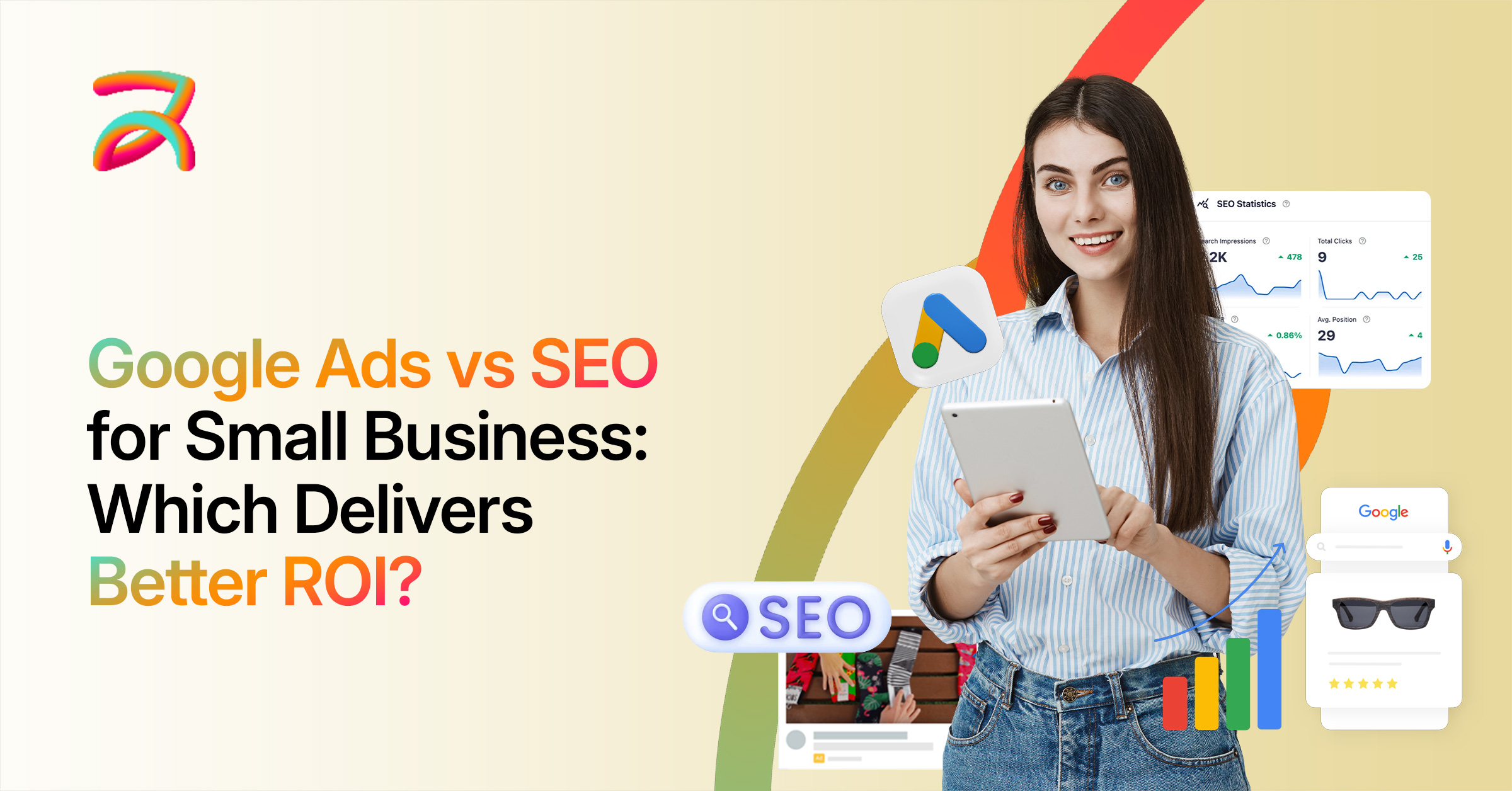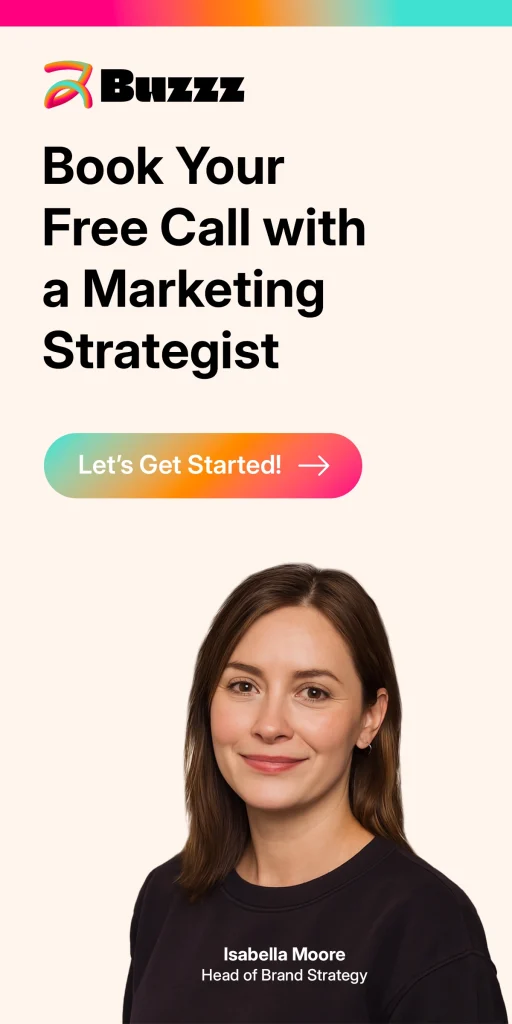Google Ads delivers 200-400% ROI with immediate results, while SEO provides 500-800% ROI over 12+ months. For small businesses, the choice between Google Ads and SEO depends on your timeline, budget, and growth objectives.
Google Ads works best when you need immediate revenue (0-3 months), have sufficient ongoing budget, and operate in low-competition industries. SEO excels for long-term growth (6+ months), limited advertising budgets, and building brand authority.
The optimal approach combines both strategies: Start with 60% Google Ads and 40% SEO for immediate results while building organic foundations, then shift to 30% Google Ads and 70% SEO as organic traffic grows. Integrated strategies typically achieve 600-1000% ROI by amplifying results across both channels.
This guide analyzes real performance data, ROI calculations, and provides a decision framework to help small businesses choose the right digital marketing investment for maximum returns.
Understanding Google Ads vs SEO: The Fundamental Differences
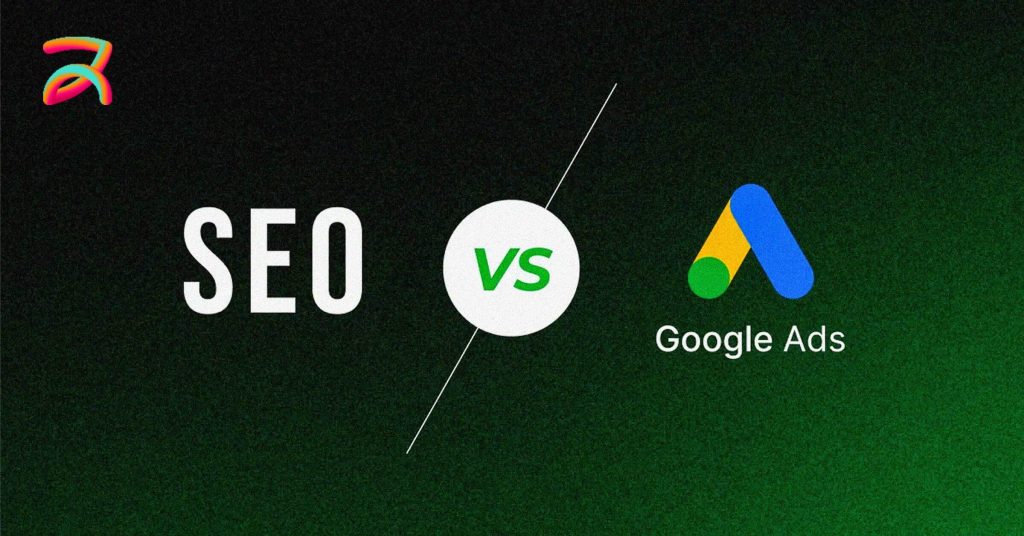
Before diving into ROI comparisons, it’s essential to understand what you’re actually choosing between. These aren’t just different marketing tactics they represent fundamentally different approaches to reaching customers through search engines.
What is Google Ads for Small Business?
Google Ads is a pay-per-click (PPC) advertising platform where businesses bid on keywords to display ads above organic search results. When someone searches for terms related to your business, your ad can appear instantly but you pay each time someone clicks.
The Google Ads auction system works like a real-time bidding war. Your ad placement depends on your bid amount, ad quality, and relevance to the search query. This creates immediate visibility benefits your business can appear at the top of search results within hours of launching a campaign.
The cost structure revolves around three key metrics: Cost-Per-Click (CPC), Click-Through Rate (CTR), and Quality Score. Your CPC can range from $1 for local services to over $50 for competitive industries like legal or insurance. Quality Score (rated 1-10) directly impacts your costs higher scores mean lower CPCs and better ad positions.
What is SEO for Small Business?
Search Engine Optimization (SEO) focuses on improving your website’s organic search rankings through various optimization techniques. Unlike paid ads, SEO aims to earn traffic naturally by making your site more relevant and authoritative for specific search terms.
SEO encompasses multiple ranking factors including content quality, website speed, mobile optimization, local citations, and backlink authority. The strategy requires consistent effort across technical optimization, content creation, and link building to achieve sustainable results.
Long-term visibility is SEO’s primary advantage. Once your pages rank well, they can maintain those positions for months or years with proper maintenance. Content marketing integration is crucial blog posts, service pages, and local content all work together to establish topical authority and capture search traffic.
Google Ads vs SEO: Side-by-Side Comparison Table
| Factor | Google Ads | SEO |
| Time to Results | Immediate (hours) | 3-6 months |
| Cost Structure | Pay-per-click | Time investment + tools |
| Sustainability | Stops when budget ends | Long-term compound growth |
| Control | High (bid adjustments) | Limited (algorithm dependent) |
| Trust Factor | Lower (paid ads) | Higher (organic credibility) |
| Targeting | Precise demographic/geographic | Keyword intent-based |
| ROI Timeline | Short-term measurable | Long-term exponential |
Google Ads for Small Business: Pros, Cons, and ROI Analysis
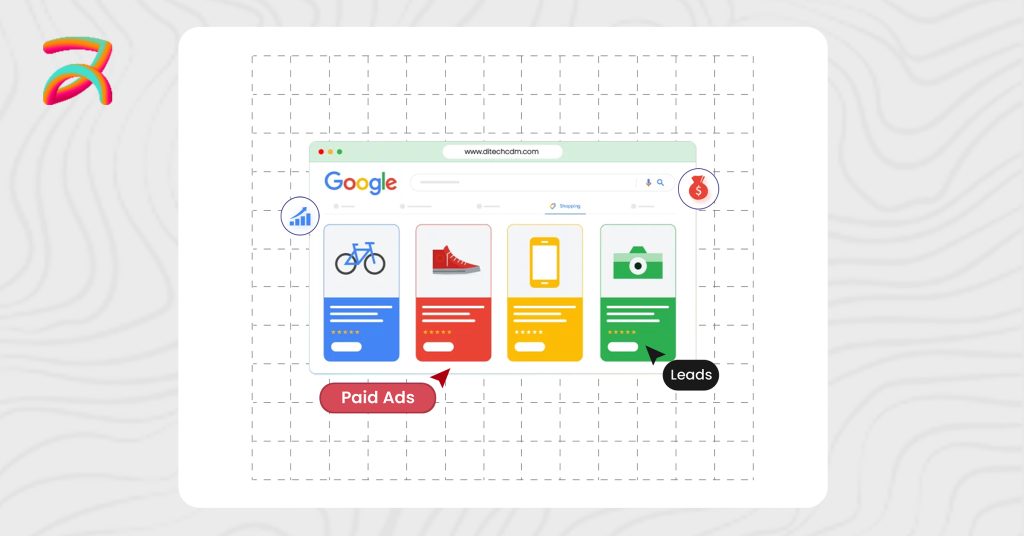
Used strategically, online ads can be a powerful tool for small businesses but they’re no magic bullet. Knowing both the benefits and limitations helps you set realistic expectations. That clarity leads to smarter, more confident investment decisions.
Google Ads Advantages for Small Businesses
Immediate Traffic Generation stands out as Google Ads’ biggest advantage. You can launch campaigns and see website visitors within hours. This speed is invaluable for new businesses, product launches, or time-sensitive promotions.
Precise Targeting Control allows you to reach exactly who you want, when you want. You can target by demographics, location, device type, and even specific times of day. A local plumber can show ads only to people within 10 miles during business hours, while an e-commerce store can target mobile users browsing in the evening.
Measurable ROI provides clear performance tracking. Every click, conversion, and dollar spent is tracked, making it easy to calculate return on investment and optimize campaigns based on actual performance data.
Budget Flexibility means you can start small and scale based on results. Many small businesses begin with $10-20 per day, testing what works before increasing investment. This approach minimizes risk while allowing for growth.
Local Business Benefits include Google My Business integration and location extensions. Local service ads appear above even organic results, and call extensions let customers contact you directly from the ad.
Seasonal Campaign Control gives you the power to turn campaigns on and off instantly. Retail businesses can increase spending during holidays, while seasonal services can pause ads during slow periods.
Google Ads Disadvantages and Challenges
Ongoing Cost Requirements mean traffic stops the moment you stop paying. Unlike SEO investments that continue generating traffic, Google Ads requires continuous funding to maintain visibility.
Click Fraud Risks can waste your budget. Competitors or automated bots may click your ads without intention to buy, draining your budget. While Google provides some protection, it’s not foolproof.
Learning Curve Complexity intimidates many small business owners. Effective Google Ads management requires understanding keyword research, bid strategies, Quality Score optimization, and conversion tracking. Many businesses waste money during the learning phase.
Competition Inflation drives up costs over time. As more businesses compete for the same keywords, CPCs naturally increase. Industries like legal, insurance, and home services have seen 200-300% CPC increases over the past five years.
Ad Blockers Impact reduces your potential reach. Approximately 27% of internet users employ ad blockers, meaning your ads won’t reach more than a quarter of potential customers.
Limited Trust Factor affects performance. Studies show organic results receive 8.5 times more clicks than paid ads, as users often skip over advertisements to find “real” results.
🤔 Google Ads or SEO?
You don’t have to guess, we’ll show you what works best for your market and budget.
Book Your Free Setup Call →Google Ads ROI Benchmarks for Small Business
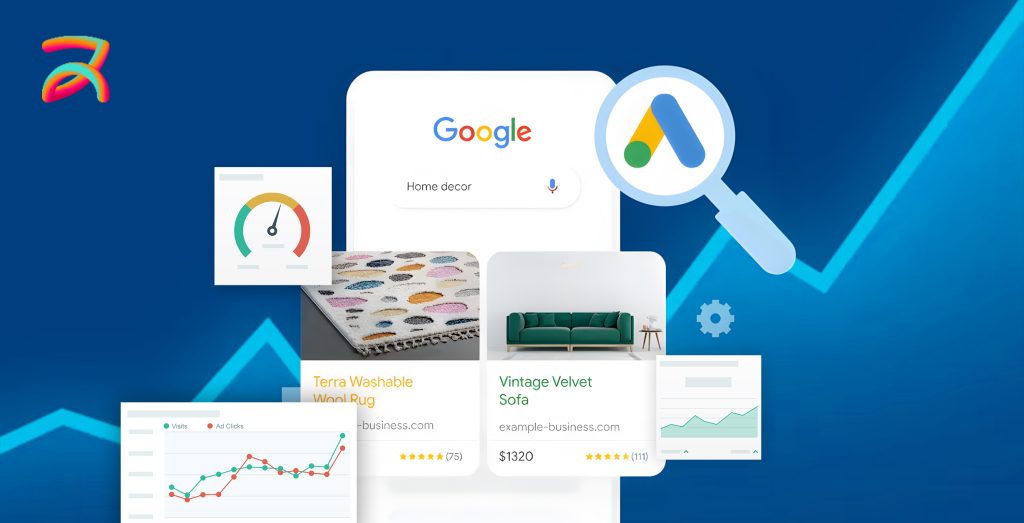
Industry performance data reveals that the average Google Ads ROI is $2 return for every $1 spent across all industries. However, this varies significantly by business type and management quality.
Small business average CPC typically ranges from $1-2 for local searches, though competitive industries can see much higher costs. Local service businesses often enjoy lower CPCs due to geographic limitations on competition.
Conversion rates average 2.35% across all industries, but local services often achieve 5-10% conversion rates due to high purchase intent. E-commerce typically sees lower conversion rates (1-3%) but higher transaction volumes.
Time to positive ROI usually occurs within 1-3 months with proper optimization. The first month focuses on data collection and initial optimization, while months 2-3 involve refining targeting and improving Quality Scores.
SEO for Small Business: Pros, Cons, and Long-term ROI
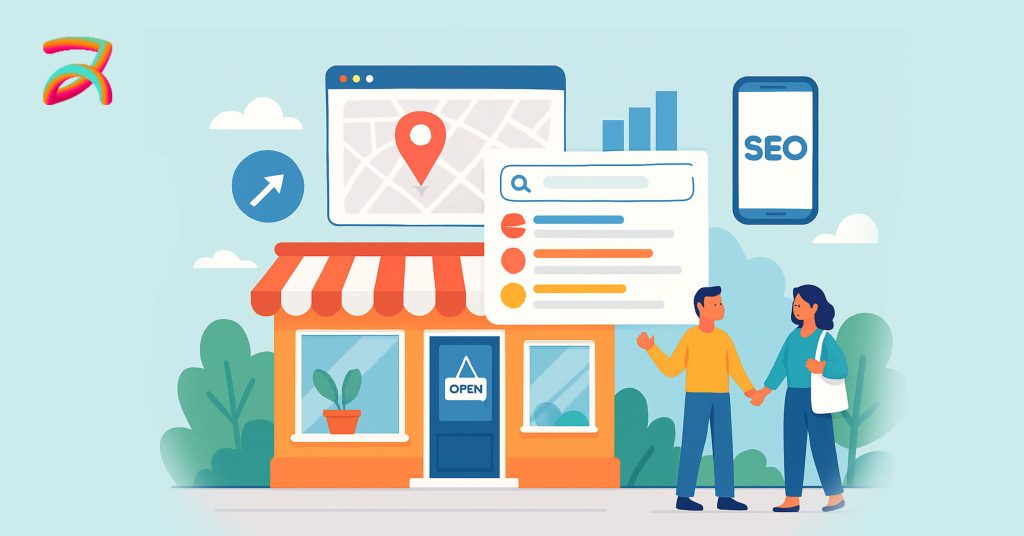
SEO takes a fundamentally different approach to generating business results. While it requires patience and consistent effort, the long-term benefits often surpass paid advertising returns for businesses willing to invest in the strategy.
SEO Advantages for Small Business
Compound Growth Effect makes SEO uniquely powerful. Unlike paid ads where each dollar generates a specific return, SEO traffic grows exponentially over time. A blog post ranking on page one can generate increasing traffic for years without additional investment.
Higher Trust and Credibility comes naturally with organic rankings. Users trust organic results more than ads, leading to higher click-through rates and better conversion rates. Organic results receive 8.5 times more clicks than paid ads, demonstrating this trust factor.
Cost-Effective Long-term strategy eliminates per-click costs once rankings are achieved. While you invest in optimization and content creation, you don’t pay for each visitor. This makes SEO increasingly profitable as traffic grows.
Local SEO Benefits are particularly powerful for small businesses. Google My Business optimization and local pack visibility can dominate local search results. Many local businesses get 70-80% of their customers through local search.
Content Marketing Synergy means your SEO content serves multiple purposes. Blog posts attract search traffic, educate customers, support social media marketing, and position your business as an industry authority.
Competitive Advantage develops over time as rankings create barriers for competitors. Established websites with strong authority are difficult to displace, giving you long-term protection against competition.
24/7 Passive Traffic works continuously without daily management. Once your content ranks well, it generates leads and sales around the clock, even while you sleep.
SEO Disadvantages and Limitations
Delayed Results Timeline tests patience and cash flow. Most businesses don’t see significant SEO traffic improvements for 3-6 months, making it challenging for businesses needing immediate results.
Algorithm Dependency creates uncertainty. Google updates can impact rankings unpredictably, sometimes causing traffic drops despite following best practices. This lack of control frustrates business owners accustomed to predictable marketing channels.
Ongoing Content Requirements demand consistent effort. SEO isn’t a “set it and forget it” strategy. Success requires regular content creation, website updates, and continuous optimization to maintain and improve rankings.
Technical Complexity can overwhelm small business owners. Website optimization requires understanding of site speed, mobile responsiveness, schema markup, and other technical factors that affect search performance.
Competitive Market Challenges make ranking difficult in saturated industries. Established competitors with strong domain authority and extensive content libraries can be nearly impossible to outrank quickly.
ROI Attribution Difficulty complicates performance measurement. Unlike Google Ads’ clear conversion tracking, SEO’s impact on sales can be harder to measure directly, especially for businesses with longer sales cycles.
SEO ROI Benchmarks and Timeline Expectations
Performance metrics show that average SEO ROI reaches $5.35 return for every $1 invested when measured long-term (2+ years). This significantly exceeds Google Ads’ average $2 return, but requires patience to achieve.
Organic traffic growth typically ranges from 20-50% annually with consistent SEO effort. Businesses publishing regular, optimized content often see faster growth, while those with minimal content updates see slower improvements.
Time to positive ROI usually takes 6-12 months for competitive keywords. Local businesses often see faster results, with “near me” searches showing improvements in 3-6 months due to lower competition levels.
Local SEO results can be achieved more quickly, with many businesses seeing local pack visibility within 3-6 months of optimization. This faster timeline makes local SEO particularly attractive for service-based businesses.
SEO vs Google Ads: ROI Comparison by Business Type
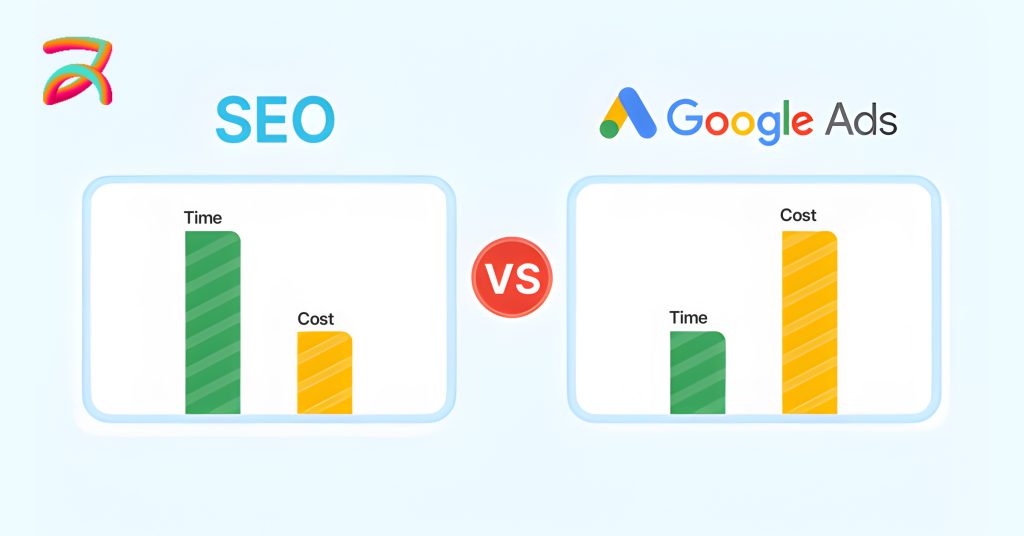
Different business models respond differently to paid and organic search strategies. Understanding how your business type typically performs with each approach helps guide your investment decisions and expectation setting.
E-commerce Businesses: Google Ads vs SEO Performance
Google Ads for E-commerce excels at driving immediate sales. Product Listing Ads (PLAs) showcase your inventory directly in search results, complete with images, prices, and ratings. Shopping campaigns can drive qualified traffic to specific products, making them ideal for inventory clearance or new product launches.
Average e-commerce PPC ROI ranges from $2-4 per $1 spent, with fashion and electronics often achieving higher returns due to strong visual appeal and impulse buying behavior. Product listing ads typically outperform text ads for e-commerce, generating 26% higher conversion rates.
Google Ads works best for e-commerce during product launches, seasonal promotions, and inventory clearance events. The immediate visibility helps capture demand when timing is critical.
SEO for E-commerce focuses on long-term market share growth. Product pages optimized for buying-intent keywords can capture consistent organic traffic, while blog content attracts top-funnel visitors who aren’t ready to purchase immediately.
Average e-commerce SEO ROI reaches $6-8 per $1 invested over 2+ years, significantly higher than PPC. This increased return comes from compound traffic growth and the elimination of per-click costs as organic rankings improve.
SEO excels for e-commerce brand building, category dominance, and long-term customer acquisition. Educational content about products, buying guides, and comparison articles can attract customers throughout the purchase journey.
Local Service Businesses: PPC vs SEO Strategy
Google Ads for Local Services provides immediate visibility in competitive markets. Local Service Ads appear above even organic results, featuring business ratings, contact information, and Google Guarantee badges. These ads are particularly effective for emergency services and high-value services where customers need immediate solutions.
Average local service PPC ROI ranges from $3-5 per $1 spent, with emergency services (plumbing, HVAC, locksmith) often achieving higher returns due to urgent customer needs. Call extensions drive direct phone inquiries, eliminating the need for website conversion optimization.
Google Ads works best for local services needing immediate bookings, emergency situations, and high-value services where customer lifetime value justifies higher acquisition costs.
SEO for Local Services builds long-term community presence and trust. Local pack visibility drives both foot traffic and phone calls, while Google My Business optimization with reviews and photos establishes credibility.
Average local SEO ROI reaches $8-12 per $1 invested over 18+ months, making it one of the highest-performing digital marketing strategies for service businesses. Local search dominance can effectively shut out competitors from valuable “near me” searches.
SEO excels for local services focused on building local authority, generating recurring customers, and managing online reputation. Content about local topics and service areas helps establish community connections that translate to long-term customer relationships.
B2B Companies: Paid vs Organic Strategy Analysis
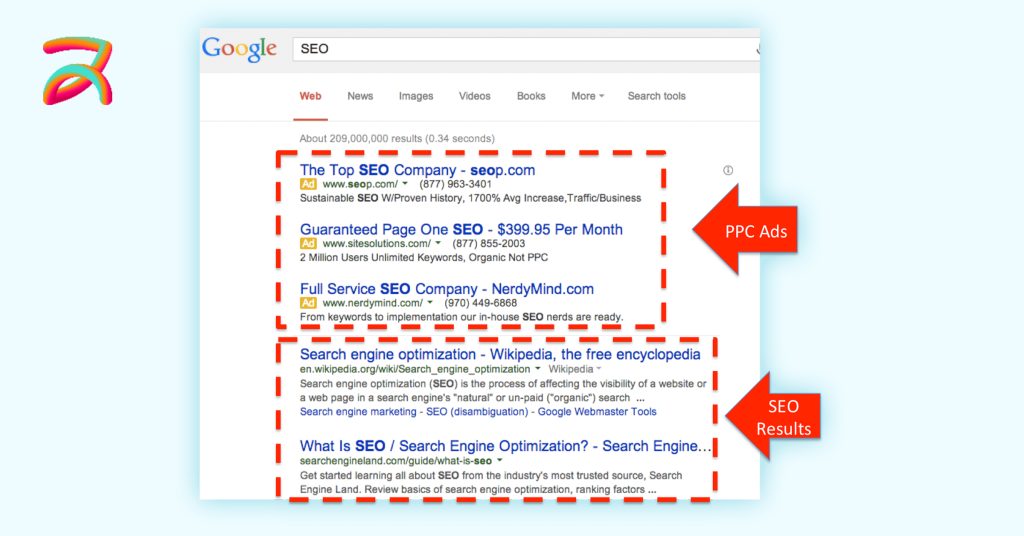
Google Ads for B2B targets specific decision-makers and generates qualified leads quickly. Integration with LinkedIn data allows for precise targeting of job titles and company sizes, while account-based marketing through Google Ads can focus on specific high-value prospects.
Average B2B PPC ROI ranges from $2.50-3.50 per $1 spent, with software and professional services often achieving higher returns due to high customer lifetime values. Lead generation campaigns focus on capturing contact information rather than immediate sales.
Google Ads works best for B2B lead generation, event promotion, product demos, and entering new markets where brand recognition is low.
SEO for B2B establishes thought leadership and supports long sales cycles. Educational content addresses prospect questions at each stage of the buying journey, while case studies and whitepapers demonstrate expertise and results.
Average B2B SEO ROI reaches $7-10 per $1 invested over 12+ months, with higher returns common for businesses with longer sales cycles and higher transaction values. Content marketing integration amplifies SEO results by attracting backlinks and social shares.
SEO excels for B2B brand authority building, educational content marketing, and nurturing prospects through extended consideration periods. Technical content and industry expertise displayed through organic search builds trust that facilitates larger business decisions.
Budget Allocation: SEO and PPC Integration Strategy
Smart small businesses don’t choose between Google Ads and SEO they integrate both strategies to maximize overall marketing ROI. The key lies in understanding how to allocate budgets based on business stage, industry competition, and growth objectives.
Small Business Budget Distribution Models
Startup Stage (0-6 months) requires immediate market validation and revenue generation. New businesses should allocate 70% of their digital marketing budget to Google Ads and 30% to SEO. This distribution provides quick market feedback while building SEO foundations for future growth.
Google Ads during startup allows for rapid testing of messaging, target audiences, and product-market fit. The immediate data helps refine business positioning before investing heavily in long-term SEO strategies.
Growing Stage (6-18 months) benefits from balanced investment as businesses have proven their market fit and need sustainable growth. A 50/50 split between Google Ads and SEO balances short-term revenue needs with long-term asset building.
During this stage, Google Ads data informs SEO keyword targeting, while initial SEO results begin reducing customer acquisition costs and improving overall marketing efficiency.
Established Stage (18+ months) should shift toward SEO-heavy strategies as organic authority builds and sustainable growth becomes the priority. Allocating 30% to Google Ads and 70% to SEO maximizes long-term profitability while maintaining competitive market presence.
Established businesses use Google Ads strategically for new product launches, seasonal campaigns, and competitive defense while relying on SEO for consistent lead generation and brand building.
| Business Stage | Google Ads % | SEO % | Reasoning |
| Startup (0-6 months) | 70% | 30% | Need immediate visibility and testing |
| Growing (6-18 months) | 50% | 50% | Balance short and long-term growth |
| Established (18+ months) | 30% | 70% | Focus on sustainable organic growth |
| Seasonal Business | 60% | 40% | Capitalize on peak seasons with ads |
SEO and PPC Synergy: How They Work Together
Keyword Data Sharing represents one of the most valuable integration benefits. Google Ads provides immediate data on which keywords convert best, informing SEO content creation priorities. Conversely, SEO research reveals long-tail opportunities that may be cost-effective for paid campaigns.
SERP Dominance occurs when businesses occupy both paid and organic results simultaneously. This dual presence increases total click-through rates and brand visibility while making competitors’ ads less effective.
Remarketing Integration allows businesses to retarget organic visitors with display ads, extending the customer journey beyond initial search interactions. Visitors who found you organically but didn’t convert become targets for strategic remarketing campaigns.
Content Amplification uses paid promotion to boost the reach of high-performing organic content. Blog posts or landing pages generating strong organic traffic can be promoted through Google Ads to accelerate results and expand audience reach.
Brand Protection prevents competitors from bidding on your brand terms while you dominate organic results. This defensive strategy maintains market share while competitors attempt to steal traffic through paid search.
Monthly Budget Examples by Business Size
Micro Business ($500-1,000/month) should allocate 60% to Google Ads ($300-600) and 40% to SEO tools and content creation ($200-400). This allocation provides immediate visibility while building long-term foundations with limited resources.
Focus areas include local Google Ads campaigns, Google My Business optimization, and basic website SEO improvements that can be implemented in-house or with minimal professional help.
Small Business ($1,000-5,000/month) benefits from a balanced 50/50 split, investing $500-2,500 in each strategy. This budget allows for more sophisticated campaigns and professional SEO services while maintaining immediate revenue generation.
Investment includes comprehensive Google Ads management, regular content creation, technical SEO improvements, and local citation building to establish market presence across multiple channels.
Growing Business ($5,000-10,000/month) should shift toward SEO with a 40% Google Ads, 60% SEO allocation. This distribution invests $2,000-4,000 in paid search while dedicating $3,000-6,000 to comprehensive SEO and content marketing.
This budget supports advanced campaign optimization, extensive content creation, link building, and competitive SEO strategies that can establish market dominance over time.
🧭 Not Sure Where to Start?
Let’s audit your business and help you decide if SEO, Google Ads or both are your best move.
Let’s Talk Strategy →Industry-Specific ROI Analysis: Google Ads vs SEO
Industry dynamics significantly impact the relative effectiveness of paid versus organic search strategies. Competition levels, customer lifetime values, and search behavior patterns all influence which approach delivers better ROI for specific business types.
High-Competition Industries (Legal, Insurance, Finance)
Google Ads Challenges in competitive industries center around cost and sustainability. CPC ranges from $50-500 per click in legal and insurance verticals, making customer acquisition extremely expensive. High competition drives up costs while ad fraud becomes more common in high-value industries.
Quality Score becomes critical in expensive industries. Poor optimization can result in $200+ CPCs for competitive terms, making campaigns unsustainable for most small businesses. Additionally, large companies with bigger budgets can outbid smaller competitors consistently.
SEO Opportunities exist despite competitive challenges. Local legal and insurance SEO remains less competitive than national campaigns, offering opportunities for geographic targeting. Long-tail keywords and niche specializations provide ranking opportunities that larger competitors may overlook.
Content marketing builds authority and trust more effectively than ads in trust-sensitive industries. Potential clients research extensively before choosing legal or financial services, making educational content and thought leadership valuable for organic visibility.
ROI Recommendation: 70% SEO, 30% Google Ads for sustainable growth in high-competition industries. The long-term nature of SEO better suits the extended sales cycles common in these verticals while providing cost-effective lead generation.
Low-Competition Industries (Local Services, Niche Retail)
Google Ads Advantages shine in low-competition environments. CPCs ranging from $1-10 per click make paid search accessible and profitable for small businesses. Less competition for ad space means better positions at lower costs, enabling immediate market penetration.
Local service businesses often achieve 5-10% conversion rates through Google Ads due to high purchase intent and limited competition. Emergency services and specialized trades can dominate local paid search results with modest budgets.
SEO Benefits compound in less competitive industries. Ranking for industry keywords becomes achievable with consistent effort, while local pack opportunities remain abundant for service businesses. Content gaps are easier to identify and fill when fewer competitors are creating comprehensive resources.
Small businesses can often achieve page one rankings within 6-12 months in low-competition niches, making SEO timelines more attractive than in competitive markets.
ROI Recommendation: 50% Google Ads, 50% SEO for balanced approach in low-competition industries. Both strategies can succeed simultaneously, allowing businesses to capture immediate opportunities while building long-term market presence.
Seasonal Businesses (Tourism, Retail, Events)
Strategic Considerations for seasonal businesses require flexible budget allocation based on demand cycles. Google Ads provides the agility to scale spending during peak seasons while SEO builds off-season authority and brand recognition.
Budget flexibility becomes crucial for seasonal success. Businesses must maximize revenue during short peak periods while maintaining minimal expenses during slow seasons. This dynamic favors Google Ads’ on/off capability.
ROI Timeline Analysis varies significantly by season for these businesses:
| Season | Google Ads Focus | SEO Focus | Expected ROI |
| Peak Season | 80% budget | Content creation | $3-6 per $1 |
| Off-Season | 20% budget | Technical optimization | $2-4 per $1 |
| Pre-Season | 60% budget | Content promotion | $4-8 per $1 |
Peak season demands maximum Google Ads investment to capture high-intent traffic when conversion rates and prices are highest. Off-season focuses on SEO improvements and content creation to strengthen organic positions for the next peak period.
Pre-season strategies combine both approaches, using Google Ads to promote new SEO content while building anticipation for peak season offerings.
Tools and Metrics: Measuring Google Ads vs SEO ROI
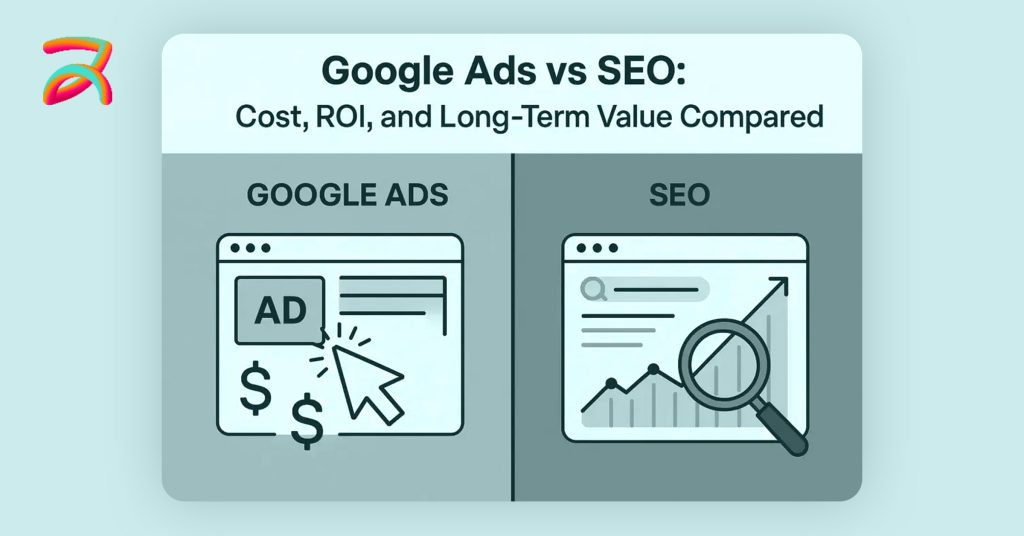
Accurate measurement is essential for making informed decisions about Google Ads and SEO investments. Different tools and metrics are required for each strategy, and understanding attribution challenges helps avoid common measurement mistakes.
Google Ads ROI Measurement Tools
Essential PPC Metrics provide clear performance indicators for paid search campaigns. Cost Per Acquisition (CPA) measures the average cost to acquire one customer, while Return on Ad Spend (ROAS) calculates revenue generated per dollar spent.
Quality Score (rated 1-10) directly impacts your costs and ad positions. Higher Quality Scores result in lower CPCs and better visibility, making this metric crucial for campaign optimization and ROI improvement.
Click-Through Rate (CTR) indicates ad relevance and appeal. Higher CTRs typically correlate with better Quality Scores and lower costs, while low CTRs suggest messaging or targeting problems that reduce ROI.
Conversion Rate measures the percentage of clicks that result in desired actions. E-commerce sites track sales conversions, while service businesses might track form submissions or phone calls.
Recommended Tools range from free options to comprehensive paid platforms:
- Google Ads interface (free) provides basic campaign management and reporting
- Google Analytics 4 (free) offers detailed conversion tracking and attribution analysis
- Optmyzr ($208/month) automates campaign optimization and performance monitoring
- WordStream ($264/month) simplifies campaign management for small businesses
SEO ROI Measurement and Attribution
Key SEO Metrics focus on long-term growth and organic visibility improvements. Organic Traffic Growth tracks month-over-month visitor increases from search engines, while Keyword Rankings measure position improvements for target terms.
Local Pack Visibility calculates the percentage of local searches showing your business in map results. This metric is crucial for local service businesses relying on geographic search traffic.
Conversion Rate for organic traffic often differs from paid traffic conversion rates. Organic visitors typically show higher trust levels but may require longer consideration periods before converting.
Customer Lifetime Value (CLV) becomes particularly important for SEO measurement since organic customers often demonstrate higher retention rates and larger lifetime purchases compared to paid traffic.
SEO Tool Comparison by category and cost:
| Tool Category | Free Options | Paid Options | Monthly Cost |
| Keyword Research | Google Keyord Planner | SEMrush, Ahrefs | $99-399 |
| Rank Tracking | Google Search Console | SE Ranking, AccuRanker | $79-499 |
| Technical SEO | PageSpeed Insights | Screaming Frog, Sitebulb | $149-299 |
| Local SEO | Google My Business | BrightLocal, Whitespark | $29-399 |
ROI Calculation Formulas and Benchmarks
Google Ads ROI Formula provides straightforward calculation: ROI = (Revenue from Ads – Ad Spend) / Ad Spend × 100
Example: A campaign generating $10,000 in revenue with $2,000 in ad spend achieves 400% ROI: ($10,000 – $2,000) / $2,000 = 400% ROI
SEO ROI Formula requires longer-term measurement: ROI = (Revenue from Organic – SEO Investment) / SEO Investment × 100
Example: SEO generating $50,000 in revenue with $5,000 in optimization investment achieves 900% ROI: ($50,000 – $5,000) / $5,000 = 900% ROI
Industry ROI Benchmarks provide performance comparisons:
- Google Ads average ROI: 200% (varies significantly by industry and management quality)
- SEO average ROI: 535% (measured long-term over 2+ years)
- Combined strategy ROI: 675% (integrated approach with data sharing and optimization)
Timeline Expectations: When to Choose Google Ads vs SEO
Understanding realistic timelines for each strategy helps set proper expectations and choose the right approach based on your business needs and cash flow requirements.
Short-term Business Needs (0-6 months)
Choose Google Ads When you need immediate results or have urgent business requirements. New product launches require quick market validation and revenue generation, while seasonal businesses can’t wait 6 months for SEO results during peak seasons.
Testing market demand for new offerings works best with Google Ads’ immediate feedback. You can validate pricing, messaging, and target audiences within weeks rather than months, saving time and money on ineffective strategies.
Competitive market entry often requires paid search to establish initial visibility against established competitors with strong organic presence. Google Ads can provide immediate market share while building long-term SEO assets.
Expected Results Timeline for Google Ads follows a predictable pattern:
- Week 1: Campaign setup and initial data collection
- Month 1: Optimization based on performance data and initial ROI calculation
- Month 3: Stable performance and scaling of successful campaigns
- Month 6: Mature campaigns with predictable returns and automated optimization
Long-term Business Growth (6+ months)
Choose SEO When building sustainable online presence is the priority and you can invest in long-term growth. Limited ongoing advertising budgets make SEO’s compound growth more attractive than continuous PPC spending.
Establishing industry authority and trust requires time and consistent content creation. Educational content, thought leadership, and community engagement build brand recognition that translates to higher conversion rates and customer loyalty.
Creating multiple revenue streams from content becomes possible with comprehensive SEO strategies. Blog posts can generate traffic, leads, social media content, and speaking opportunities beyond direct search traffic.
SEO Results Timeline requires patience but delivers compound returns:
- Month 1-3: Technical optimization and content foundation building
- Month 4-6: Initial keyword ranking improvements and traffic growth
- Month 7-12: Significant organic traffic increases and lead generation
- Year 2+: Compound growth effects and market dominance establishment
Hybrid Strategy Implementation Timeline
Integrated Approach Phases maximize both immediate and long-term results through strategic coordination:
Phase 1 (Months 1-3): Google Ads provides immediate results while SEO foundations are built. Paid campaigns generate revenue and data while technical SEO improvements and initial content creation establish optimization groundwork.
Phase 2 (Months 4-9): Data-driven optimization of both channels begins showing synergistic effects. Google Ads keyword data informs SEO content priorities while organic traffic data helps refine paid targeting.
Phase 3 (Months 10-18): Gradual budget shift toward SEO as organic growth scales and reduces dependence on paid traffic. Google Ads focus shifts to competitive defense and new market expansion.
Phase 4 (18+ months): SEO-focused strategy with strategic Google Ads campaigns for specific objectives like product launches, seasonal promotions, or competitive responses.
Common Mistakes That Reduce ROI in Both Strategies
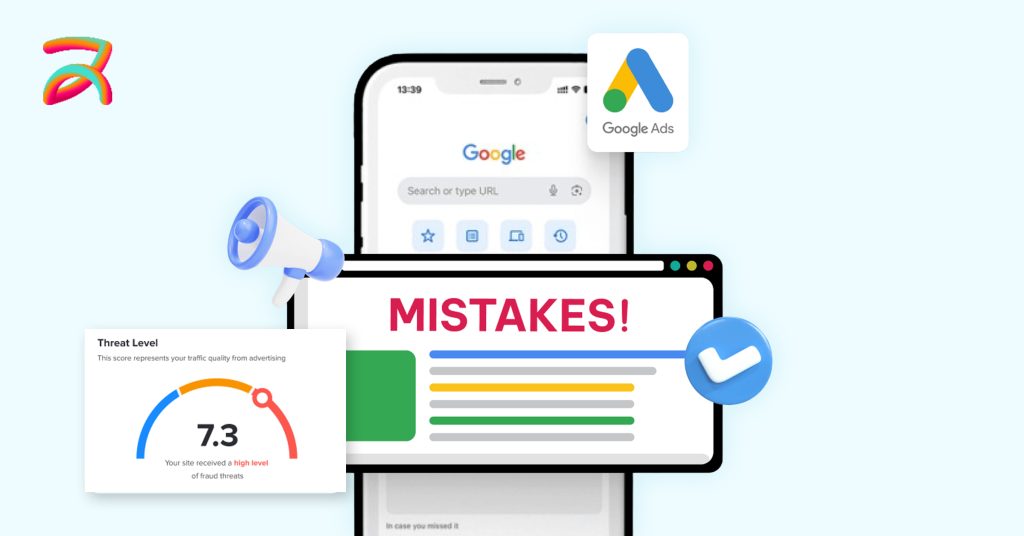
Avoiding these frequent errors can significantly improve your return on investment for both Google Ads and SEO. Many small businesses unknowingly sabotage their own success through preventable mistakes.
Google Ads Mistakes That Waste Budget
Broad Match Keywords Without Negatives represents the most expensive mistake small businesses make. Using broad match without negative keywords can trigger ads for completely irrelevant searches, wasting 30-50% of your budget on unqualified traffic.
Example: A local plumber using broad match “water heater repair” might trigger ads for “water heater repair videos” or “how to repair water heater yourself” searches from people who won’t hire a professional service.
Ignoring Quality Score Optimization can increase costs by 400% or more. Poor ad relevance, low landing page experience, and irrelevant keywords result in higher CPCs and worse ad positions, making campaigns unsustainable.
Not Using Ad Extensions misses opportunities for additional click real estate and improved performance. Location extensions, call extensions, and sitelink extensions can improve CTR by 10-15% while providing more information to potential customers.
Poor Landing Page Experience creates high bounce rates and low conversion rates. Sending traffic to generic homepages instead of relevant, optimized landing pages wastes both click costs and conversion opportunities.
Inadequate Geographic Targeting shows ads outside your service areas, wasting budget on customers you can’t serve. A local restaurant advertising nationwide or a regional service company showing ads in distant cities burns through budgets without generating revenue.
Neglecting Mobile Optimization ignores 60% of search traffic. Non-mobile-optimized campaigns lose potential conversions from the majority of searches, particularly for local businesses where mobile search dominates.
SEO Mistakes That Delay Results
Keyword Cannibalization occurs when multiple pages compete for the same search terms, confusing search engines and reducing overall visibility by 25-30%. Each target keyword should have one primary page to avoid internal competition.
Ignoring Local SEO Opportunities means missing “near me” search traffic that often has the highest conversion rates. Local businesses must optimize Google My Business, build local citations, and create location-specific content.
Technical SEO Neglect can delay results by 3-6 months or more. Site speed issues, mobile responsiveness problems, and crawling errors prevent search engines from properly indexing and ranking your content.
Inconsistent Content Publishing slows growth by 40-60%. Search engines favor websites that regularly publish fresh, relevant content. Sporadic publishing reduces crawl frequency and limits ranking improvements.
Not Optimizing for Featured Snippets misses position zero opportunities that can dramatically increase organic traffic. Structuring content to answer questions directly can capture featured snippets and voice search traffic.
Focusing Only on High-Volume Keywords ignores long-tail opportunities that often convert better and rank faster. Small businesses can achieve quicker wins with specific, lower-competition terms before targeting broader keywords.
Integration Mistakes That Reduce Combined ROI
Competing for Same Keywords wastes budget when Google Ads and SEO pages target identical terms without coordination. Strategic integration ensures paid and organic results complement rather than compete with each other.
Inconsistent Messaging confuses potential customers when paid ads promise different value propositions than organic content. Brand messaging should align across all channels to build trust and improve conversion rates.
Not Sharing Performance Data between channels misses optimization opportunities. Google Ads conversion data should inform SEO content creation, while organic search insights should guide paid keyword expansion.
Budget Allocation Imbalance limits overall performance when businesses over-invest in one channel while neglecting the other. Balanced approaches typically outperform single-channel strategies by 30-50%.
🚀 Small Business, Big Growth Potential
We help small businesses grow fast with the right blend of performance-based Google Ads & long-term SEO strategies.
Book Your Free Setup Call →Case Studies: Real Small Business ROI Comparisons
Real-world examples demonstrate how different businesses achieve success with Google Ads, SEO, or integrated approaches. These case studies provide concrete performance data and actionable insights for similar businesses.
Case Study 1: Local Restaurant – Google Ads vs SEO Performance
Business Profile: Mario’s Italian Kitchen, a family-owned restaurant in suburban Denver with $500K annual revenue, needed to increase customer acquisition in a competitive local market with 15+ Italian restaurants within 5 miles.
Google Ads Campaign (6 months):
- Budget: $1,200/month ($7,200 total investment)
- Strategy: Local campaigns targeting “Italian restaurant near me” and “pizza delivery” within 10-mile radius
- Results: 340 new customers, $28,000 additional revenue
- ROI: 289% ($20,800 profit / $7,200 investment)
- Key Metrics: $3.50 average CPC, 4.2% CTR, 12% conversion rate
The Google Ads campaign generated immediate results, with new customers booking reservations within the first week. Local service ads and call extensions drove direct phone orders, particularly effective for their dinner rush and weekend bookings.
SEO Strategy (18 months):
- Investment: $800/month ($14,400 total over 18 months)
- Strategy: Local SEO optimization, Google My Business enhancement, food blog content, and local community event coverage
- Results: 850 new customers, $89,000 additional revenue
- ROI: 518% ($74,600 profit / $14,400 investment)
- Key Metrics: 450% organic traffic increase, #1 local pack ranking for “Italian restaurant [city name]”
The SEO strategy took longer to show results but ultimately delivered higher ROI. Local blog content about Denver food scenes and community events established Mario’s as a neighborhood authority, leading to organic word-of-mouth referrals beyond digital channels.
Conclusion: SEO delivered 79% higher ROI but required 3x longer timeline. For immediate cash flow needs, Google Ads provided faster returns, while SEO built sustainable long-term growth and community presence.
Case Study 2: E-commerce Store – PPC and SEO Integration
Business Profile: ActiveGear Online, a sporting goods retailer specializing in hiking and camping equipment, generating $2M annual revenue with strong seasonal fluctuations and fierce competition from larger retailers.
Integrated Strategy (12 months):
- Total Investment: $5,000/month ($60,000 total)
- Google Ads: $3,000/month (60% of budget)
- SEO: $2,000/month (40% of budget)
Combined Results:
- Revenue Growth: $480,000 additional sales
- Overall ROI: 700% ($420,000 profit / $60,000 investment)
Channel Breakdown:
- Google Ads: $180,000 revenue (375% ROI)
- Product Listing Ads for seasonal items
- Shopping campaigns for clearance inventory
- Brand protection campaigns
- SEO: $300,000 revenue (1,400% ROI)
- Hiking guide content and gear reviews
- Product comparison pages
- Local outdoor activity content
Key Insight: Integration amplified results by 35% compared to single-channel projections. Google Ads data revealed high-converting long-tail keywords that informed SEO content creation, while organic traffic provided remarketing audiences for more cost-effective paid campaigns.
The business used Google Ads to capture immediate seasonal demand while building long-term organic authority through comprehensive gear guides and local outdoor content. This dual approach defended against larger competitors while establishing market expertise.
Case Study 3: B2B Service Company – Long-term Strategy Comparison
Business Profile: Summit Marketing Consultancy, a digital marketing agency serving mid-market B2B companies, with $1.5M annual revenue and 18-month average sales cycles requiring extensive prospect education.
Year 1 Strategy: 80% Google Ads, 20% SEO
- Results: $320,000 new business, 267% ROI
- Challenge: High customer acquisition costs ($400 average CPA)
- Issue: Paid traffic had lower trust levels, requiring longer nurturing periods
Year 2-3 Strategy: 30% Google Ads, 70% SEO
- Results: $750,000 new business, 525% ROI
- Achievement: Reduced CPA to $125 through organic leads
- Benefit: Higher conversion rates from organic traffic due to trust factor
The strategic shift toward SEO content marketing established thought leadership through comprehensive industry guides, case studies, and weekly insights. This authority building reduced sales cycle length by 40% as prospects arrived pre-educated and trusting the company’s expertise.
Google Ads remained important for capturing immediate opportunities and retargeting website visitors, but SEO became the primary lead generation engine as content marketing matured.
Making the Decision: Google Ads vs SEO ROI Framework
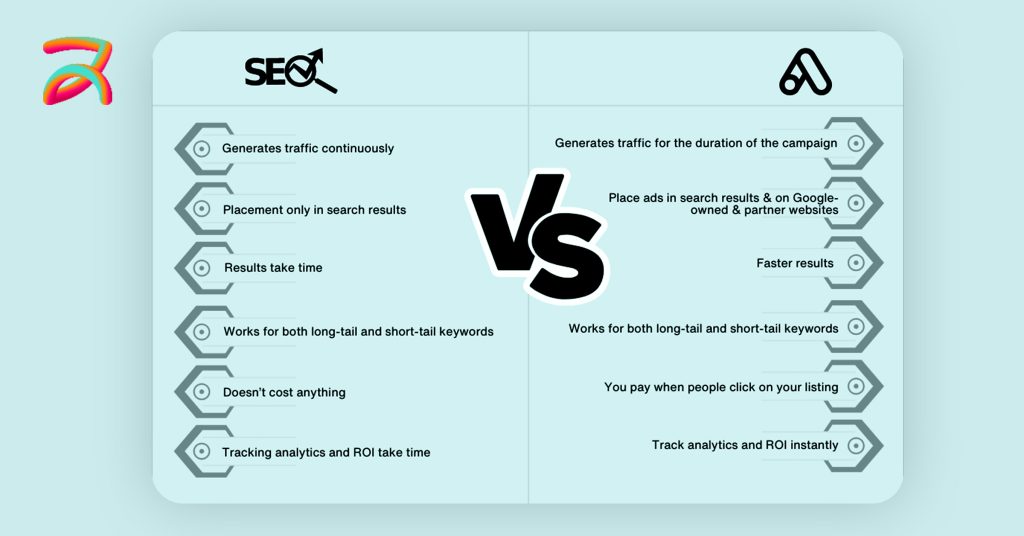
Choosing between Google Ads and SEO requires systematic evaluation of your business situation, goals, and capabilities rather than following generic recommendations.
Decision Matrix: When to Choose Each Strategy
Understanding when each strategy performs best helps small businesses make informed investment decisions based on objective criteria.
Choose Google Ads When These Conditions Exist
Need immediate revenue (next 30-90 days): Cash flow requirements or business launch timelines don’t allow for SEO’s longer development period
Have sufficient budget for ongoing ad spend: Can sustain monthly advertising costs without compromising other business operations
Operating in low-competition industry (CPC under $5): Cost-effective paid search makes immediate sense for budget-conscious businesses
Selling time-sensitive products/services: Seasonal offerings, limited-time promotions, or trending products benefit from immediate visibility
Testing new market segments or products: Quick validation of demand, pricing, and messaging before committing to long-term strategies
Have optimized landing pages and conversion process: Existing website infrastructure can effectively convert paid traffic
Choose SEO When These Factors Apply
Building long-term sustainable business: Focus on compound growth and reducing dependence on paid advertising over time
Limited ongoing marketing budget: Can invest time and effort instead of continuous cash outflow for traffic generation
Have 6+ months for results timeline: Patient capital and business model that can wait for organic growth to materialize
Can create valuable, regular content: Have expertise, time, or resources to consistently publish helpful content for target audience
Target audience researches before buying: B2B customers or high-consideration purchases involving extended decision-making processes
Want to build brand authority and trust: Establish market leadership and expert positioning through organic visibility and content marketing
Understanding these fundamentals helps business owners choose strategies that align with their specific circumstances rather than following one-size-fits-all advice. When implemented correctly, both approaches can deliver substantial returns for small businesses. The key lies in matching strategy selection to business needs, resources, and timeline requirements.
Budget Allocation Recommendations by Business Goals
Strategic budget distribution should align with primary business objectives and growth stage requirements:
| Primary Business Goal | Google Ads % | SEO % | Timeline | Expected ROI |
| Immediate Cash Flow | 80% | 20% | 1-3 months | 200-400% |
| Market Testing | 70% | 30% | 3-6 months | 250-350% |
| Balanced Growth | 50% | 50% | 6-12 months | 400-600% |
| Long-term Authority | 30% | 70% | 12-24 months | 500-800% |
| Market Dominance | 25% | 75% | 18-36 months | 600-1000% |
Immediate Cash Flow prioritizes Google Ads for businesses needing quick revenue generation. Startups, seasonal businesses, or companies with urgent financial needs benefit from this approach.
Market Testing uses Google Ads for rapid validation while building SEO foundations. This approach suits new product launches or market expansion initiatives.
Balanced Growth provides optimal risk distribution for most small businesses, capturing immediate opportunities while building long-term assets.
Long-term Authority focuses on sustainable growth through organic search dominance, ideal for established businesses with patient capital.
Market Dominance commits heavily to SEO for comprehensive market control, suitable for businesses with strong competitive advantages and long-term vision.
Future Trends: AI Impact on Google Ads vs SEO ROI
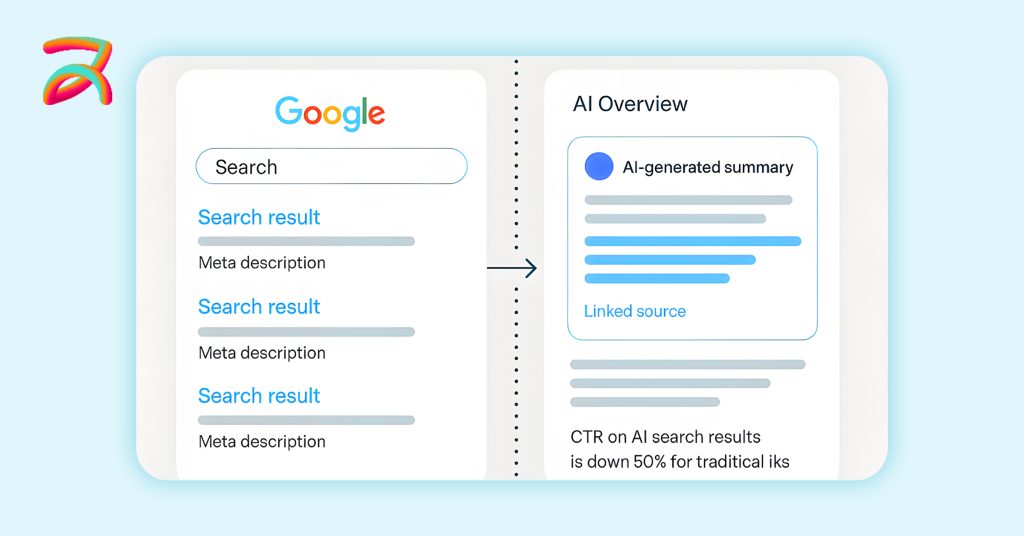
Artificial intelligence and machine learning are reshaping both paid and organic search, creating new opportunities and challenges for small businesses. Understanding these trends helps inform long-term digital marketing strategies.
Google AI and Machine Learning Effects on PPC
Smart Bidding Automation uses machine learning to optimize bids in real-time based on conversion likelihood, user behavior, and contextual signals. Early adopters report 15-30% ROI improvements as AI identifies optimization opportunities human managers miss.
Performance Max Campaigns represent Google’s vision for automated advertising across all properties (Search, Display, YouTube, Gmail, Maps). These campaigns use AI to find customers across Google’s ecosystem, potentially improving reach and efficiency for small businesses with limited campaign management expertise.
Privacy-First Advertising responds to iOS 14.5 updates and cookie deprecation by using AI to maintain targeting effectiveness despite reduced data availability. This shift may level the playing field for small businesses competing against larger companies with extensive first-party data.
Voice Search Integration requires optimization for conversational queries and local intent. Small businesses adapting early to voice search patterns may gain competitive advantages as smart speaker adoption continues growing.
ROI Impact Predictions:
- Automated bidding could improve small business PPC ROI by 25% by 2025
- Privacy changes may increase CPCs by 10-20% as targeting becomes less precise
- AI-generated ad copy and creative could reduce creation costs by 40%
AI Overview and Search Generative Experience Impact on SEO
AI Overview Results now appear prominently in Google search results, potentially reducing click-through rates to traditional organic listings. However, businesses optimizing content for AI Overview inclusion could see 50% increases in organic visibility.
Entity-Based SEO focuses on topical authority and semantic relationships rather than just keyword optimization. Search engines increasingly understand content context and expertise, rewarding comprehensive, authoritative resources over keyword-stuffed pages.
User Intent Optimization requires deeper understanding of searcher behavior and query context. AI helps search engines interpret implicit intent, making content relevance and user satisfaction more important than technical optimization tricks.
Content Quality Standards continue rising as AI detection improves and search engines prefer human-created, experience-based content over generic, templated material. This trend favors small businesses with genuine expertise and unique perspectives.
SEO ROI Projections:
- Businesses optimizing for AI Overview could see 50% increase in organic visibility
- Entity-based SEO strategies may improve long-term ROI by 35%
- High-quality content investment becomes more critical for sustained rankings
Integrated Strategy Evolution for Maximum ROI
Cross-Channel Attribution improvements help businesses understand customer journey touchpoints across paid and organic channels. Better attribution leads to more effective budget allocation and campaign optimization.
Predictive Analytics uses AI to forecast performance and recommend budget adjustments based on historical data, seasonal patterns, and market trends. Small businesses gain access to enterprise-level optimization without large analytics teams.
Personalization at Scale enables dynamic content and ad experiences based on user behavior across channels. Integrated strategies can deliver personalized experiences from initial search through final conversion.
Voice and Visual Search optimization requires preparation for emerging search modalities. Businesses investing early in voice optimization and visual search presence may capture first-mover advantages.
Conclusion and Action Plan
The question isn’t whether Google Ads or SEO delivers better ROI it’s which strategy aligns with your business goals, timeline, and resources. Google Ads provides faster, measurable returns (200-400% ROI) perfect for immediate needs, while SEO offers superior long-term performance (500-800% ROI) with compound growth effects.
The most successful small businesses don’t choose between these strategies they integrate them strategically. Combined approaches typically outperform single-channel efforts by 30-50%, creating synergistic effects that amplify overall marketing performance.
Your decision framework should consider business stage, industry competition, cash flow requirements, and growth objectives. Startups need immediate validation through Google Ads, while established businesses benefit from SEO’s sustainable growth and reduced customer acquisition costs.
Immediate Action Steps:
- Assess Current Situation: Evaluate your timeline needs, budget availability, and existing digital marketing capabilities
- Calculate Potential ROI: Use the provided worksheets to estimate returns for both strategies based on your specific metrics
- Start with Strengths: Begin with the strategy that matches your current resources and expertise
- Plan Integration: Develop a 12-month roadmap for combining both approaches as your capabilities and results grow
- Monitor and Adjust: Track performance monthly and optimize based on actual data rather than assumptions
FAQ Section
For immediate ROI (0-6 months), Google Ads typically delivers 200-400% returns with faster results. For long-term ROI (12+ months), SEO provides 500-800% returns with compound growth. Most successful small businesses use both strategies, starting with 60% Google Ads and 40% SEO, then shifting to 30% Google Ads and 70% SEO as organic traffic grows.
Small businesses should allocate 3-7% of revenue to digital marketing, with budget distribution based on business stage: Startups (70% Google Ads, 30% SEO), Growing businesses (50/50 split), Established businesses (30% Google Ads, 70% SEO). Typical monthly budgets range from $500-5,000 depending on business size and competition level.
Google Ads ROI is measurable within 30-90 days, with optimization improving results monthly. SEO ROI typically becomes positive after 6-12 months, with significant growth occurring in months 12-24. Google Ads provides immediate feedback for testing and optimization, while SEO builds compound growth over time.
Small businesses can compete effectively using both strategies. In Google Ads, local targeting and niche keywords offer competitive advantages despite smaller budgets. In SEO, local search optimization and community-focused content help small businesses outrank larger competitors for location-based searches. The key is focusing on specific geographic areas and specialized services rather than competing on broad national terms.
Average Google Ads ROI for small businesses is 200-400% ($2-4 return per $1 spent) with results visible within 3 months. Average SEO ROI is 500-800% ($5-8 return per $1 invested) measured over 12-24 months. Combined strategies often achieve 600-1000% ROI as channels support each other through data sharing and SERP dominance.


